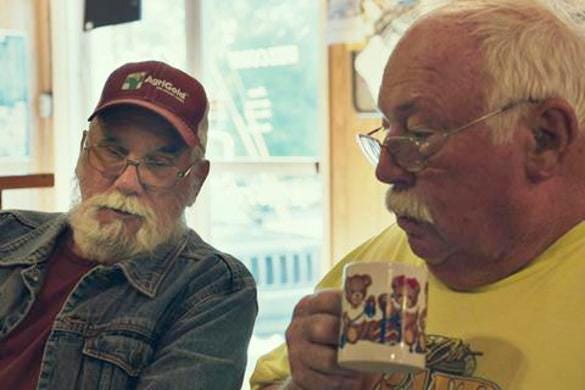Monrovia, Indiana

The documentary genre has undergone probably more changes than any other type of filmmaking. It started out as purely observational, journalistic looks at compelling places or people. At some point they started adding narration to make sense of it all.
About 30 years ago, documentarians began putting themselves in their films -- quite literally. Morgan Spurlock’s “Super Size Me” and Roger Moore’s “Roger & Me” were seminal documentaries that told the filmmakers’ story as much as what they were aiming the camera at.
Now we have a spate of political polemics that are little more than propaganda for a particular viewpoint. I don’t place much value in these.
Frederick Wiseman is a throwback to the early, purest essence of documentary filmmaking. After starting his career in the law, he turned to movies more than 50 years ago and never looked back.
He does not deeply research his subjects beforehand, just showing up and searching for interesting things to shoot. Unlike other filmmakers who might film for months or years, Wiseman typically sticks with a subject for just a month or six weeks, spending most of his time in the editing bay trying to forge a narrative out of the raw footage.
Nearly 90, he still cranks out a new movie nearly every year.
“Monrovia, Indiana” is his latest work, focusing on the tiny rural town in Morgan County. Just a half-hour drive from downtown Indianapolis, it’s a picturesque postcard of a city, faded from its glory days but still vibrant. If you asked Norman Rockwell to paint a portrait of the quintessential heartland city, it wouldn’t look much different from Monrovia.
Wiseman’s camera descends upon the town, and simply observes. Fair warning: some people may find this movie overlong and dull. At nearly 2½ hours, it lacks the big events and confrontations you’re probably used to seeing in a documentary. Certainly, nobody shows up with a bullhorn at the house of some famous person, who may or may not even be home, to shout at them.
Instead, “Monrovia” is just a languid, unhurried look at life in a small Indiana town. Although the movie is being billed as a look inside the Trump voter base, you’ll be hard pressed to find any vein-popping political diatribes in this movie. There is plenty of talk about government, but it’s mostly in city or county councils talking about things like utilities, water rights and rules for new development.
Some of the scenes are just snippets; others, short films unto themselves. We spend about 15 minutes inside a gun shop as locals peruse the wares and talk about the upcoming deer season. One nondescript fellow buys a sleek revolver that’s practically a pocket cannon (if your pockets went down to your knee). There’s no arguments or bloviating: here, guns are just an everyday fact of life.
The film also wanders into a restaurant preparing the orders of the day. Or a Moose Lodge where a 50-year member is being honored. We watch the ceremony in full. Ditto for a wedding, and a funeral. At a local veterinarian clinic, a dog’s tail is being bobbed. Over in the corn fields, crops are being irrigated or harvested.
At the annual Monrovia Festival, people are selling tawdry or mildly offensive bumper stickers, as well as hemp oil. People go fishing, get haircuts, etc. It’s life, ungilded.
The experience of watching “Monrovia, Indiana” is like literally living in the city for a time. I have no doubt that folks from metropolitan backgrounds will feel the urge to snicker at the denizens. I’ve lived in such places and understand how the people there appreciate the slower, smoother rhythms of life.
It’s not better or worse than city life. Just very different.
“Monrovia, Indiana” is pure observation, without intrusion.



